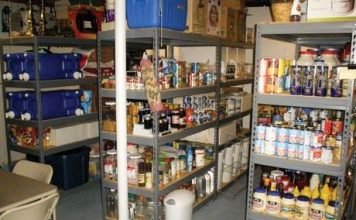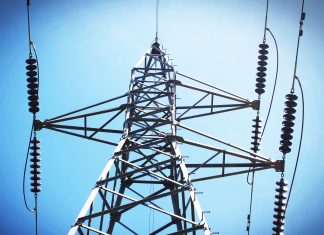 |
|
| Issue #87 • May/June, 2004 |
This article is the first in a series of what will be a beginner’s course in solar electricty. Simultaneously we have instituted a Home Energy Information (www.homeenergy.info) section on our website where you can ask questions of Jeff Yago, the author of this series. Yago is a licensed professional engineer and certified energy manager who has writtten many energy articles for BHM. He has extensive solar thermal and solar photovoltaic system design experience, and is author of Achieving Energy Independence One Step At A Time, which includes many solar system wiring examples. Those interested in solar electricity will want to save these articles for future review when planning your solar system.
I am getting numerous requests from readers wanting very specific guidance on how to install their own solar electric systems. Many have already found that this process is a little like trying to build an automobile by purchasing parts from a NAPA dealer. For example, you can buy a brake drum, wheel bearing, and oil filter, but since your car does not yet exist, how do you know what parts you need, what parts will fit with other parts, and how should these parts be wired together.

During the next few issues, I will take you through the “basics” of solar system design and installation, and answer your specific questions as we go along. This course will continue on the Backwoods Home Magazine website (www.backwoodshome.com) under their new Home Energy Information (www.homeenergy.info) section. You will be able to e-mail your installation questions and offer suggestions for future home energy saving articles.
Before I can help you design your own solar power system, you have to understand that there are actually many different types of solar power systems, for many different applications.
System types
Some solar power systems are 12-volt DC due to the many low voltage RV and boating lighting and appliances available, and do not have a utility line connection. These DC only systems can be used to power several DC lights in a remote cabin, or a DC well pump in a field for watering cattle. Some solar power systems have an inverter to convert a 12, 24, or 48-volt DC battery voltage into 120-volt AC power to operate standard household appliances. Some grid connected solar power systems are designed for direct connection to your utility line and do not use any batteries at all.
Hybrid solar power systems can include a battery bank, a solar array, a generator, and even a wind turbine to provide power at all times with the utility grid serving only as backup. Inverters and solar arrays are available in many different styles, voltages, and wiring configurations. Some solar arrays are mounted on the roof, some on the top of a pole, and some are ground mounted, with each having different wiring rules.
If you visit a solar home that has a well designed and properly installed solar power system, you will find the concept is actually fairly simple. The hard part is knowing what wiring layout was best for this specific home, what size and quantity of each system component was required, and what wire size and fuses were needed to keep from burning down the house.
Batteries
One of the most misunderstood parts of a solar power system is the battery or battery bank, and that is where our class begins. Some solar battery banks use wet cells, like golf cart batteries, while others use sealed or gel cell batteries, and each have different temperature, mounting, and ventilation requirements.

Every battery is designed for a specific type of charge and discharge cycle. Car batteries have thin plates to keep their weight down and are designed for a heavy discharge lasting a few seconds, followed by a long period of slow re-charge. A 6-volt golf cart battery (size T-105) is the minimum battery I recommend for a residential solar application. You will need to buy these in “pairs” to make 12 volts. Golf cart batteries have very thick plates and are designed for hours of heavy discharge each day, followed by a fast recharge in only a few hours each night. This is similar to the duty cycle of a residential solar application, only in reverse. A solar battery must be able to provide long periods of deep discharge each evening and night, followed by a full recharge in only a few hours of sunlight each afternoon. Very few batteries can take a deep discharge-recharge cycle every day, and the 6-volt golf cart battery is the least expensive and easiest to find locally that can.
For some reason, everyone wants to use a sealed marine battery for their homegrown solar system. I strongly recommend that you do not. Included is a photo showing a sealed marine battery that “exploded” after being connected to a small solar charger for several months.
Even though this was a small 12-volt DC 5-amp solar charge controller powered from a single 50-watt solar photovoltaic module, this was enough energy to gradually overcharge the battery and evaporate all of the electrolyte even though this battery was “sealed.” A low electrolyte level can expose the plates which will gradually warp or “grow” in thickness as they oxidize. This can cause an internal short circuit and ignition of the hydrogen gas.
Plate damage can also occur when there is a large buildup of sediment after the upper plate areas become exposed from reduced water levels and begin to “flake” off. Most liquid acid batteries do not vent gasses while discharging. However, near the end of a typical charging cycle, when the battery is almost “full,” the sulfuric acid and water electrolyte will begin to break down into hydrogen and oxygena very explosive combination.
When ignited by a nearby spark or flame, an “explosion” can result, but this flash lasts only a fraction of a second, which is usually too fast to ignite nearby walls. However, this is still a very explosive reaction, with plastic battery parts becoming acid-covered shrapnel. While using a hand grinder one day in a shop, I accidentally directed the sparks towards several car batteries being charged about 30 feet away. There was a very loud explosive sound with acid and plastic hitting every wall of the large shop, yet I did not see a flame and there was no fire. Regardless, it was not a pleasant experience.

Always wear eye protection and acid proof gloves when working around batteries, and have lots of water and baking soda nearby. This will neutralize any acid spills from battery refilling and prevent further corrosive damage.
A typical 6-volt golf cart battery will store about 1 kilowatt-hour of useful energy (6 volt X 220 amp-hr X 80% discharge = 1056 watt-hours). Since this would only power two 50-watt incandescent lamps for 10 hours (2 X 50 X 10 = 1000 watt-hours), your alternative energy system will most likely require wiring several batteries together to create a battery bank. Since each golf cart battery weighs almost 65 pounds, there are weight considerations as well as battery gas venting issues to think about.
An area of a garage or storage building having a concrete floor is the most common location for a battery bank, although some large systems have their own specially designed battery room. I am going to assume you are installing a much smaller system and will only require four to eight batteries.
If you need more than the 220 amp-hr capacity contained in each golf cart battery, I suggest switching to the larger “L-16” size traction battery, having a 350 amp-hour rating, which may allow using fewer batteries. This battery is the same length and width as a golf cart battery, but is much taller and twice as heavy. This is an excellent battery for solar applications and can take very heavy charge-discharge cycling. This industrial rated battery may be more difficult to find, as it is only available from battery wholesale distributors.
Batteries can lose over half of their charge when exposed to extreme temperature swings, so be sure your proposed battery location stays in a 50° to 80° F range, or you will need to insulate the battery box. Since liquid batteries require refilling and battery terminal cleaning to remove corrosion several times each year, the floor area selected should be able to take an occasional acid spill and water wash down.

Battery venting is very important as discussed earlier, and if you build an enclosure around your batteries, it should be designed to direct all vented gasses to the outside. A 2-inch PVC pipe makes a good vent, but be sure it is located at the highest point in your battery enclosure where the lighter hydrogen gas will accumulate. Be sure it also includes a screened vent cap to keep out rain and insects. Do not locate your battery bank near a gas water heater or other open flame appliance that could ignite any accidental hydrogen accumulation.
A battery box can be built using standard 2 x 4 framing construction, with pressure treated plywood lining the interior surfaces. A hinged top door is needed for periodic battery maintenance, and should include a gasket to prevent gases from entering the room. Note how the top of the site-built battery box shown in these photos slopes up to a high rear area where two PVC vent pipes are located. The interior plywood surfaces of this wood frame construction were painted with several coats of fire and acid resistant paint. Since batteries lose capacity with lower temperatures, your batteries should not rest directly on a cold uninsulated concrete floor.
Pressure treated 2 x 4s on edge, spaced every 6 inches and covered by a fiberglass laminated concrete board, makes an excellent base for your battery box. This heavy sheet material is sold in most building supply outlets as a backing behind ceramic tile work in wet shower stalls, and is usually available in smaller 2-foot by 4-foot sizes. By careful planning, you may be able to use the entire sheet without cutting or splicing.
If you can afford to invest in the more expensive gel or absorbed glass matte (AGM) batteries, you will have more flexibility in locating your battery bank, since these batteries do not need to be refilled and do not normally generate explosive gasses. The photo shows a large battery bank with the batteries mounted close together in a vertical steel rack. You do not need a vapor proof enclosure or vent pipe when using these batteries, however they cost almost 30 percent more without providing any additional life or storage capacity.
The next article will continue this discussion on battery installation, and will go into series and parallel battery connection, battery wiring materials and sizing, and battery bank fuse and disconnect safety considerations. Be sure to check the Backwoods Home Magazine website for more do-it-yourself solar system installation questions and answers.
Summary
If you will be taking this course, you have a reading assignment before our next class. For the past several years, in almost every issue of Backwoods Home, I have written an article related to solar power systems that included a system description, installation photographs, and actual wiring diagrams. Your first assignment is to review these articles:
- Issue # 71, Sept 2001, p. 8, A Safe Water Supply When You Are Off the Grid
- Issue # 72, Nov 2001, P. 24, A Solar Primer
- Issue # 73, Jan 2002, p. 27, Emergency Solar Power
- Issue # 78, Nov 2002, p. 24, Phantom Solar
- Issue # 79, Jan 2003, p. 50, Solar Powered Toilet
- Issue # 82, July 2003, p. 16, Choosing the Right Backup Generator
- Issue # 83, Sept 2003, p. 10, >Battery Powered Weekend Retreat
- Issue # 83, Sept 2003, p. 44, Standby Battery Charging Techniques
- Issue # 84, Nov 2003, p. 19, Keep Those Gadgets Working When the Power Goes Out
[weaver_widget_area id=’articles_about_yago’ class=’text3′]














I’m sorry meant to say AGM batteries. Thx
I have two 12 volt Ahmed batteries about 8 feet from a wood burning stove. Are these at risk of an explosion or should I cover them with some sort of box. If yes any recommendations. Thx
How do Lithium batteries compare with golf cart batteries for solar storage?
Finally a factual article. So much hype on the Internet about installing solar panels for home applications! Actually, that may be a good thing because the availability of solar keeps downward pressure on commercial electricity rates.
Keep up the good work.